Additional fertilizer for winter cabbage plant and broccolini (Broccolini and cabbage plant growing)
How to grow cabbage and broccolini in net grow tunnel. Last time, I explained how to plant cabbage and broccolini seedlings, and how to do tunnel cultivation. (Grow tunnel for winter cabbage plant and broccolini.) It’s been about 3 weeks since then.
We’re going to take care of growing cabbage and broccolini this time. We’re giving the cabbage and broccolini an extra feeding. (Additional fertilizer to the cabbage and broccolini.)
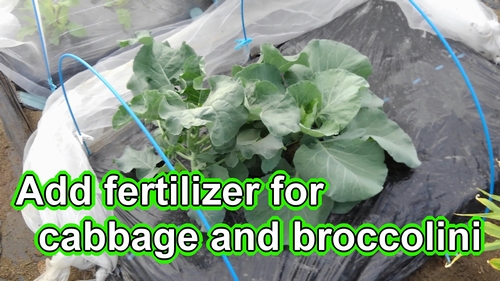
Vegetables like cabbage and broccolini, grown from seedlings, need additional fertilizer after about 3 to 4 weeks of planting as the ground fertilizer’s effect wears off.
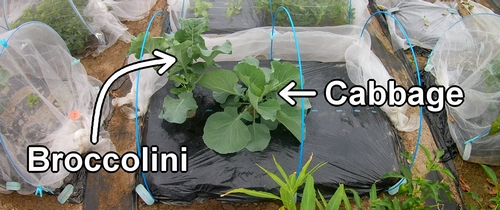
We prepared the soil for cabbage and broccolini at the end of August. (Best soil for cabbage and broccolini.) Due to the summer heat, the soil was somewhat dry, so we watered it and cultivated while adjusting its hardness.
We planted cabbage and broccolini seedlings around mid-September. (Best time for planting cabbage and broccolini.) After planting the seedlings, we installed insect netting to prevent pests from invading.
Both cabbage and broccolini seedlings looked similar right after planting, but as they grew, differences emerged. The broccolini plant has grown taller, with much larger leaves, and their stems have become sturdy.
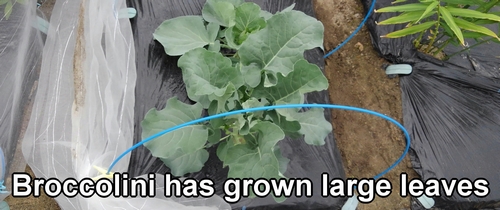

Unlike broccolini, the cabbage (winter cabbage plant) leaves spread horizontally. Around 40-50cm (15.7-19.7 inches) in diameter.

The center of the cabbage appears to be starting to form a head. “Heading" refers to the leaves rolling and overlapping to form a spherical shape. For cabbage, once insects get into the heading part, they’re hard to remove, so let’s check for pests frequently.
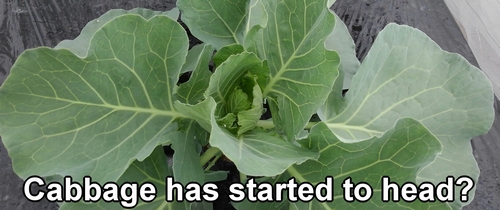
Since cabbage and broccolini are covered with insect netting, they’re somewhat protected from pests, but insects may still get in through gaps in the netting. When checking on the cabbage and broccolini in the field, remember to open the net and check the underside of the leaves as well.
Additional fertilizer to the cabbage and broccolini (Give the cabbage and broccolini an extra feeding)
I’ll explain how to fertilize using broccolini as an example, but the method is the same for cabbage. The fertilizing spots are about 20cm (8 inches) away from the base of the broccolini (cabbage) plant, in two places. Apply 20g (0.7 oz) of chicken manure per spot.
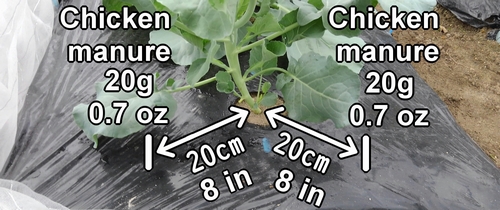
Chicken manure is a commonly used fertilizer in organic farming, containing a balanced mix of nutrients necessary for the growth of cabbage and broccolini. The amount of chicken manure is measured using a measuring cup or similar device. Over-fertilizing can lead to pest problems and poor growth. Let’s stick to the right amount.

Regarding fertilizing cabbage and broccolini, since you can’t fertilize with the mulch sheet in place, first, remove the mulch pins from the plot and then peel back the mulch sheet.


Afterwards, dig holes for fertilizing about 20cm (8 inches) away from the base of the broccolini (cabbage). The holes should be about 10cm (4 inches) deep. Please use a trowel when digging the holes.

After digging the hole, fertilize with chicken manure. After fertilizing the broccolini, please fertilize the cabbage in the same way.
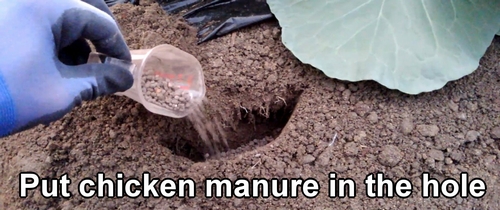
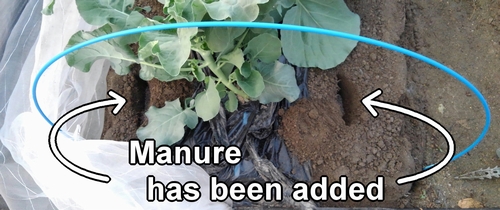
After additional-fertilizing, water the chicken manure, cover it with soil. We water the fertilizer, chicken manure, to help the soil microorganisms. (For microorganisms, moist fertilizer is easier to decompose.)

Don’t forget to cover the fertilizer with soil. If chicken manure is exposed on the soil, it can attract pests due to the smell.

Finally, put back the black polythene mulch and the insect netting for grow tunnel.
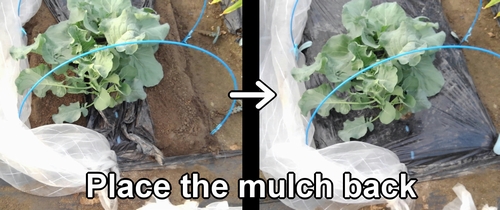
With that, the fertilizing of cabbage (winter cabbage plant) and broccolini is complete. (Cabbage and broccolini cultivation management completed.)
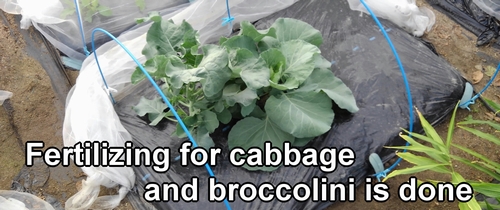
Following is the video for how-to. English subtitles are available.






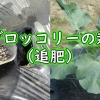







ディスカッション
コメント一覧
まだ、コメントがありません